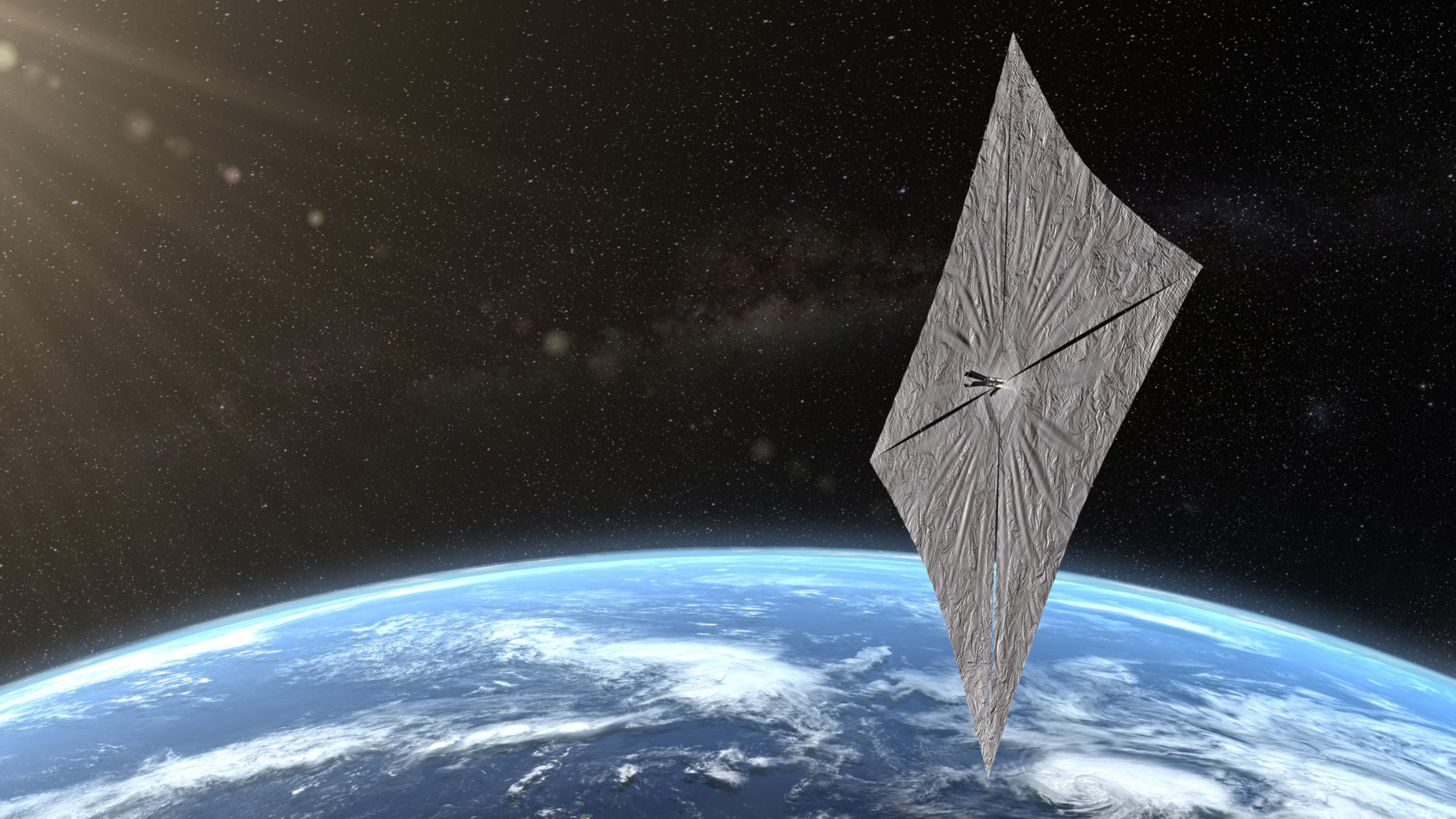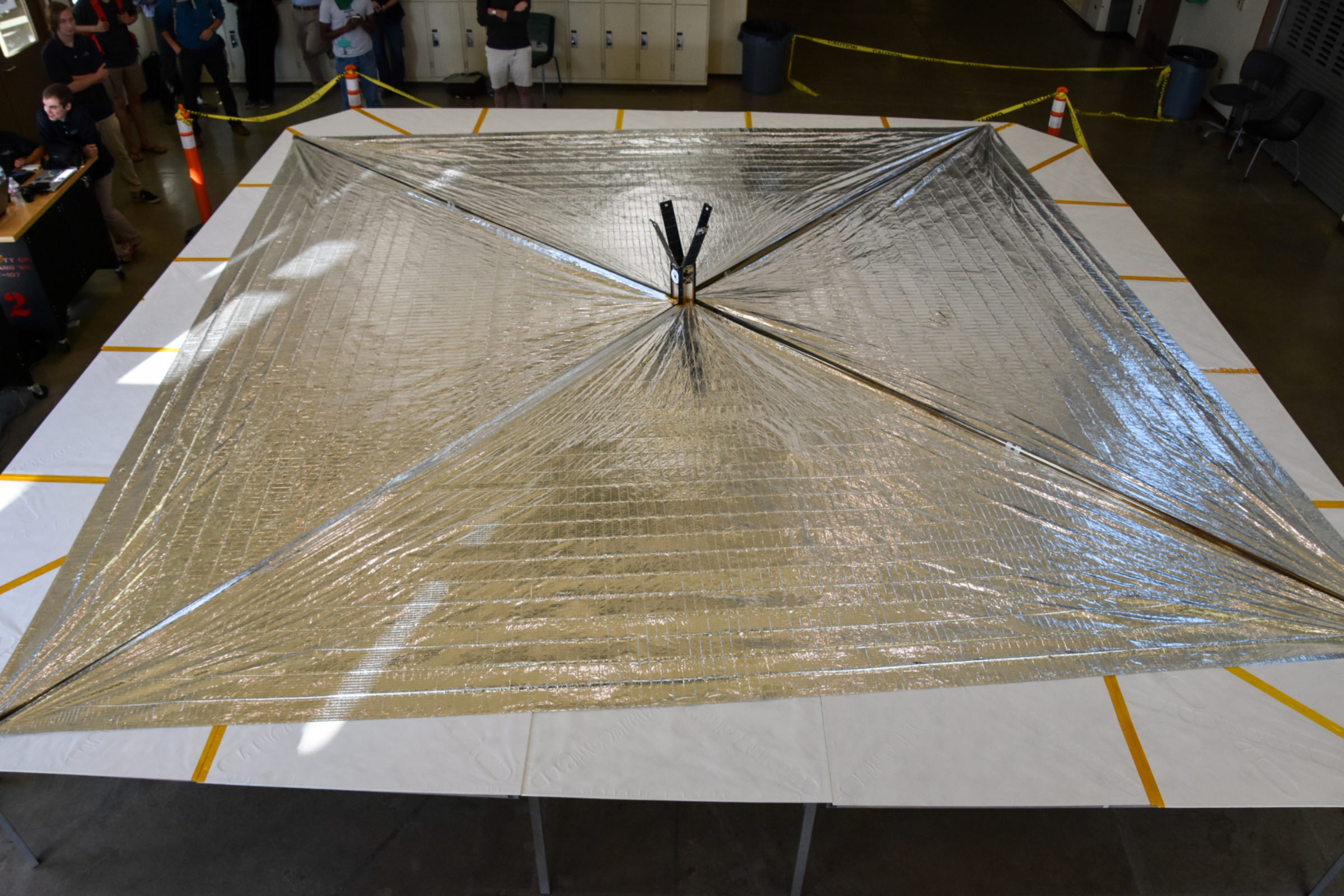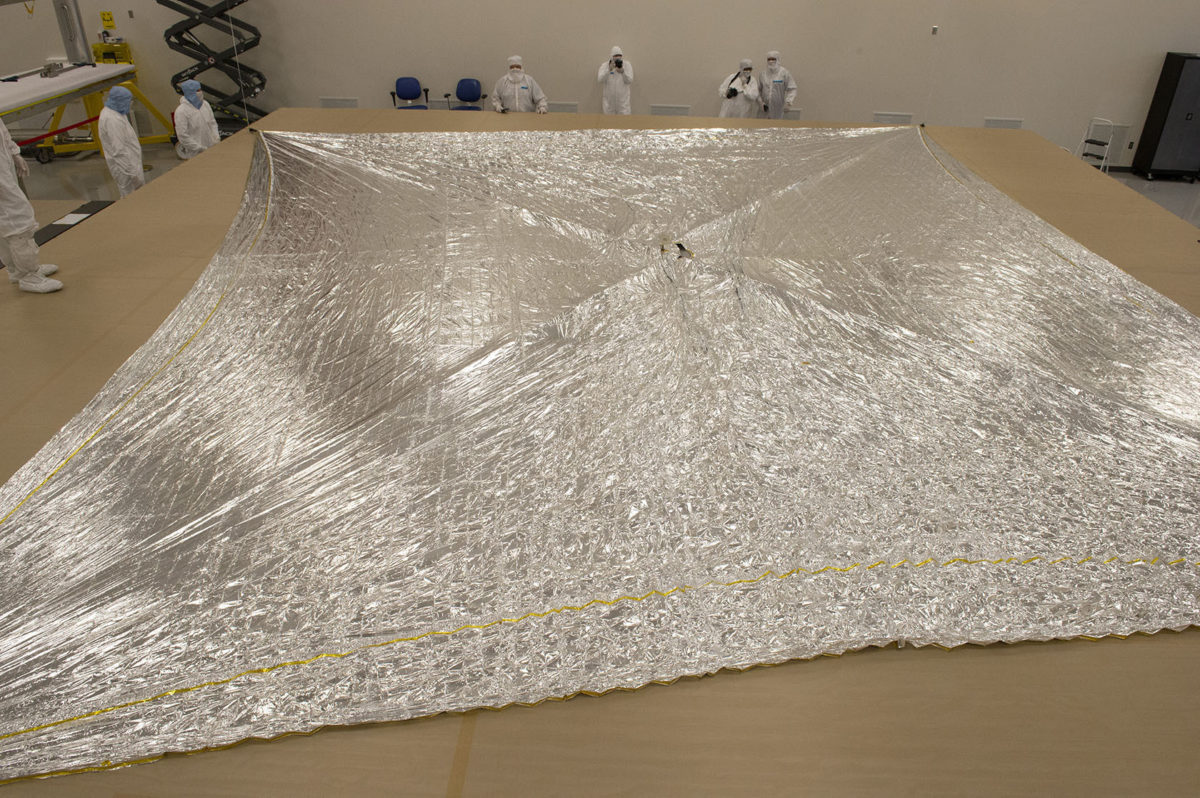What is solar sailing?
Solar sailing is a revolutionary way of propelling a spacecraft through space.
A solar sail spacecraft has large reflective sails that capture the momentum of light from the Sun and use that momentum to push the spacecraft forward. The Planetary Society’s LightSail 2 mission is one example of this technology in action.
A new way to travel space - with Bill Nye Did you know there's a way for spacecraft to travel farther, faster, and maybe one day reach other stars? Bill Nye is here to teach you about the game-changing technology called solar sailing.
How does solar sailing work?
Light is made up of particles called photons. Photons don’t have any mass, but as they travel through space they do have momentum. When light hits a solar sail — which has a bright, mirror-like surface — the photons in that light bounce off the sail (i.e. they reflect off it, just like a mirror). As the photons hit the sail their momentum is transferred to it, giving it a small push. As they bounce off the sail, the photons give it another small push. Both pushes are very slight, but in the vacuum of space where there is nothing to slow down the sail, each push changes the sail’s speed.

How does a solar sail control its direction?
When a solar sail faces the Sun directly, photons push the spacecraft forward, away from the Sun. But a solar sail can move in other directions by tacking like a sailboat, changing the angle of the sail relative the Sun. It’s even possible to shift the spacecraft's orbit around the Sun, by angling the sail so that solar photons push against the direction it is traveling. Solar sails can also control their direction in other ways, such as changing their center of mass or using tip vanes.
What is the advantage of solar sailing?
Spacecraft gain most of their momentum when they are launched from Earth, and then most increase their speed or change course using chemical rockets that burn fuel that the spacecraft carries on board. But more rocket fuel means more weight, which limits how much can be carried. Most spacecraft reach their maximum speed and then coast through space or rely on gravity assists from other planets to reach their destinations.
With solar sails, a spacecraft can continue accelerating as long as there is light pushing on it. Within a solar system, sunlight can continuously push on the sail, accelerating the spacecraft throughout its entire voyage. This means that solar sail-propelled spacecraft can reach speeds that would be practically impossible for chemical rockets to achieve.
Solar sailing spacecraft are also advantageous because they can be placed in orbits that would otherwise be unstable by using the sail acceleration as a balancing force. As an example, this could enable solar monitoring missions to sit between the Earth and Sun at a closer distance than otherwise possible to provide more warning of solar storms.
What is a solar sail made of?
Current solar sails are made of lightweight materials such as Mylar or polyimide coated with a metallic reflective coating. LightSail 2 uses 4 triangular Mylar sails that are just 4.5 microns (1/5000th of an inch) thick. They unfold using 4 cobalt alloy booms that unwind like tape measures. The sails have a combined area of 32 square meters (344 square feet), about the size of a boxing ring.

How big does a solar sail have to be?
There is theoretically no minimum size for a solar sail, but for the same mass spacecraft, bigger sails will capture more sunlight and accelerate the spacecraft more quickly. A NASA team in the 1970s, headed by Planetary Society co-founder Louis Friedman, proposed a solar sail with a surface area of 600,000 square meters (6.5 million square feet), that would be used to send a spacecraft to rendezvous with Halley’s comet. This is equivalent to a square of 800 meters (half-mile) by 800 meters – the size of 10 square blocks in New York City! Of course, the practicality of building and deploying such an enormous sail is questionable. But if such a sail could be successfully developed, amazing destinations could be reached.
How fast can a solar sail go?
A solar sail’s speed depends on its size and its mass. A bigger sail captures more sunlight, gaining more momentum and accelerating more quickly for the same mass. For a given sail size, a lower mass spacecraft will have a higher acceleration. The acceleration also depends on its distance from a light source and strength of the light source. As a solar sail spacecraft gets farther away from the Sun, the amount of sunlight available to it decreases, meaning that it accelerates less quickly. Theoretically, powerful lasers could be aimed at a distant solar sail, providing some extra acceleration as the spacecraft gets further from the Sun.
To give a specific example of solar sail speed, LightSail 2’s 32-square-meter sails accelerate it at just 0.058 mm/s². In one month of constant sunlight, the spacecraft’s speed would increase by a total of 549 kilometers per hour, roughly the speed of a jet airliner at cruising speed.
Larger sails, or small sails accelerated by lasers, could theoretically go much faster. In 2016, the group Breakthrough Initiatives announced a plan to send a fleet of tiny, laser-powered solar sails to our nearest star, Alpha Centauri. The spacecraft would be targeted in space by Earth-based lasers, and accelerate to 20 percent the speed of light.

How expensive is solar sailing?
Building a solar sail, especially a very large one, is a feat that still needs development. And that research and development can be expensive. But once solar sails are better tested and understood, they could be a relatively inexpensive means of propulsion. Sunlight is free and unlimited, meaning that a solar sail-propelled spacecraft could travel greater distances without having to increase the amount of fuel it carries on board, and could potentially use smaller, cheaper launch rockets for the same trip. So to travel at great speeds to distant destinations, or to provide long term stability in an otherwise unstable orbit, solar sailing could be an affordable option.
The Planetary Society’s LightSail spacecraft were funded entirely by Society members, private donors, and backers of a crowdfunding campaign through Kickstarter. Together, these tens of thousands of people pooled their resources to build and launch solar sailing spacecraft. This is a historic demonstration of what is possible when people unite in support of space exploration.
Why do we want solar sails? Where will solar sails take us?
The most exciting thing about solar sails is that they could open up new avenues for space science and exploration. A solar sail-propelled spacecraft could reach distant planets and star systems much more quickly than a rocket-propelled spacecraft because of the continual acceleration that solar sailing provides. The technology for interplanetary or interstellar solar sailing is still far from being developed, however.
In the near-term, solar sailing can also be used effectively for other classes of missions including solar monitoring, multi-object flybys, and “pole-sitting” spacecraft for continuous observations of Earth’s or another object’s polar regions.
Solar sails can also provide propulsion for CubeSats—small, inexpensive satellites that are increasingly being used by emerging spacefaring nations, small companies, and even school groups—allowing them to maneuver in space without relying on rocket fuel. The Planetary Society’s LightSail mission is demonstrating the potential use of solar sails for CubeSats.
When was the solar sail invented?
Solar sailing is a concept with a long history, dating all the way back to an idea Johannes Kepler shared with his friend Galileo Galilei in 1608.
The Planetary Society is one of the pioneers of solar sailing technology. In the early 2000s, we built the Cosmos 1 solar sail spacecraft. On June 21, 2005, Cosmos 1 launched from the submarine Borisoglebsk in the Barents Sea. However, a rocket failure prevented the spacecraft from reaching orbit. Had the mission been successful, it would have been the first ever use of a solar sail spacecraft, as well as the first space mission by a space advocacy group.
Who has built solar sails? What solar sailing missions exist?
Since the failed Cosmos 1 mission, solar sails have been successfully built and launched by the Japanese Aerospace Exploration Agency (JAXA) with their IKAROS spacecraft that first demonstrated controlled solar sailing, by NASA with their NanoSail-D spacecraft, and by The Planetary Society with our LightSail 1 spacecraft.
Many more solar sailing missions are in development, including The Planetary Society’s LightSail 2 mission and NASA’s NEA Scout mission to a near-Earth asteroid. NASA’s Advanced Composite Solar Sail System, or ACS3, launching in 2022 will test out a larger sail in Earth orbit than previous missions. NASA’s Solar Cruiser mission launching in 2025 will test an even larger solar sail the size of over six tennis courts.
What is the biggest solar sail?
The biggest solar sail built to date is the IKAROS spacecraft developed by JAXA. IKAROS’s sail’s size is 196 square meters, about half the size of a basketball court. This was the first interplanetary solar sailing mission, traveling to Venus and onward on a trajectory to the far side of the Sun.
But size isn’t everything. Even with a smaller sail (32 square meters), LightSail 2's acceleration will be about ten times that of IKAROS. This is because LightSail 2’s spacecraft body is much smaller and lighter than that of IKAROS, so the sail has less mass to propel.
Does a solar sail fly on the solar wind?
No. Solar sails fly on photons, whereas the solar wind is made up of different ionized particles ejected by the Sun. These particles move slower than light and create a force that is less than one percent as strong as light pressure.
Can I be a part of solar sailing?
The public is invited to witness the launch of The Planetary Society’s LightSail 2 spacecraft from Cape Canaveral, FL aboard a SpaceX Falcon Heavy rocket. The launch is scheduled to take place in June 2019.
You also might be able to see the LightSail 2 spacecraft with the naked eye or with telescopes throughout the duration of its mission, which will last for about a year. You can find more information about that at sail.planetary.org.
And to be a part of groundbreaking missions like this in the future, you can become a member of The Planetary Society.


 Explore Worlds
Explore Worlds Find Life
Find Life Defend Earth
Defend Earth



